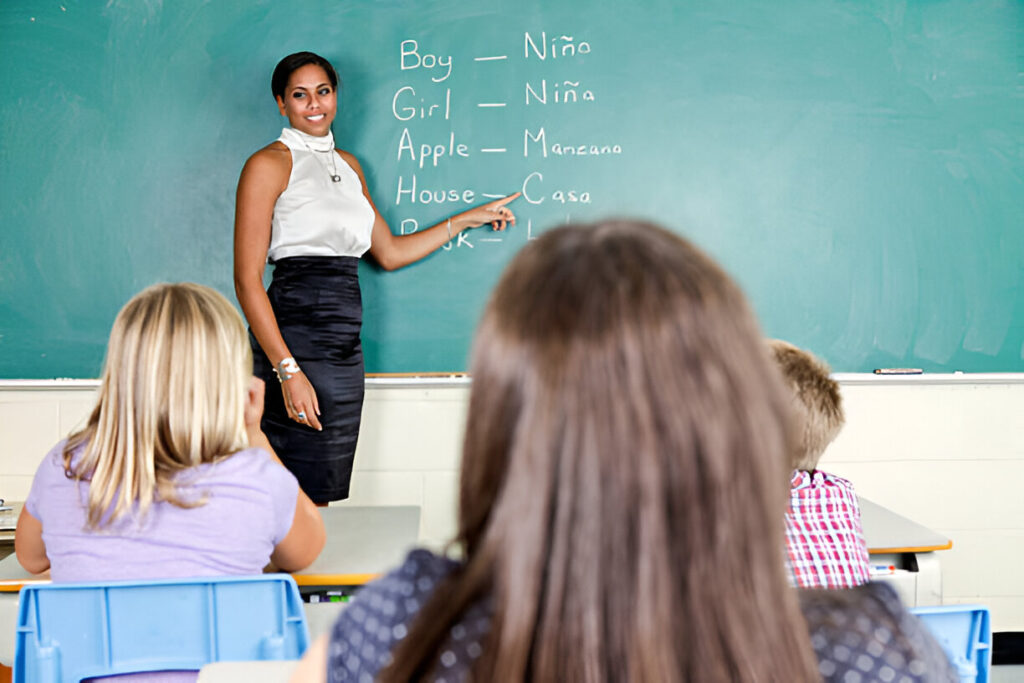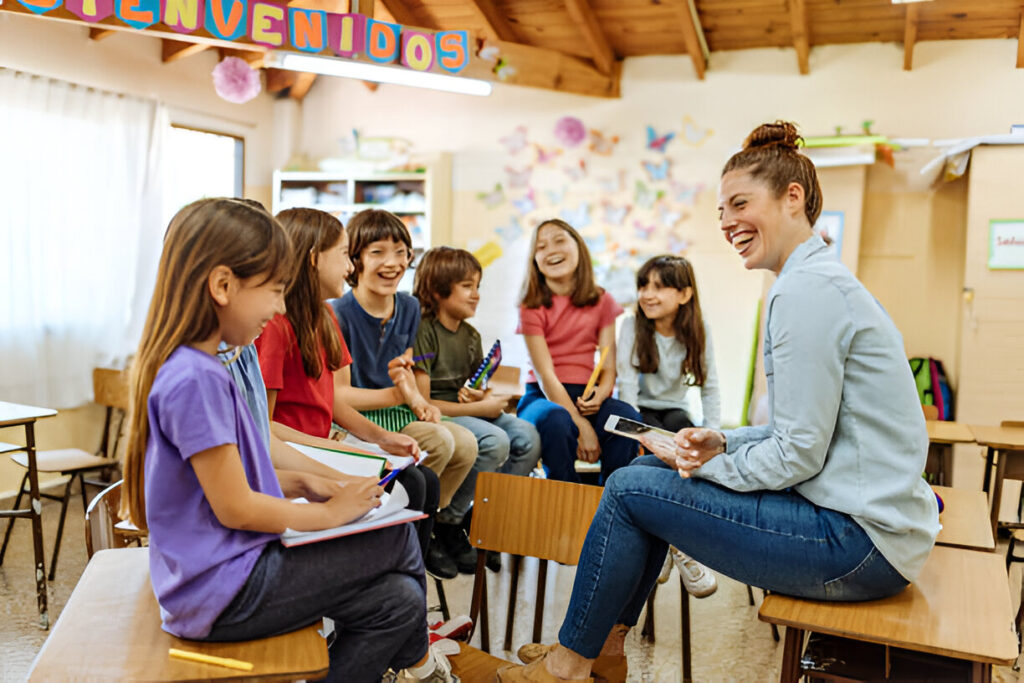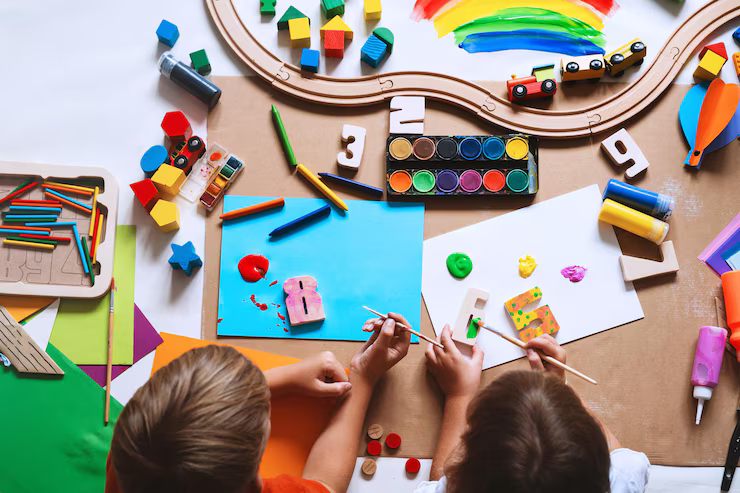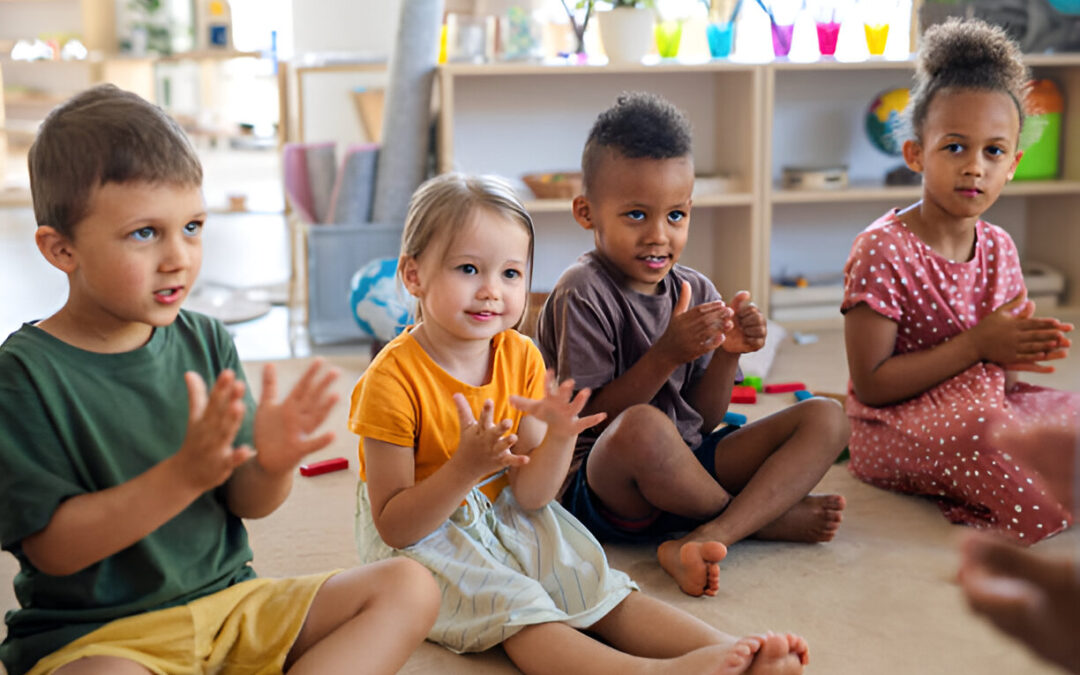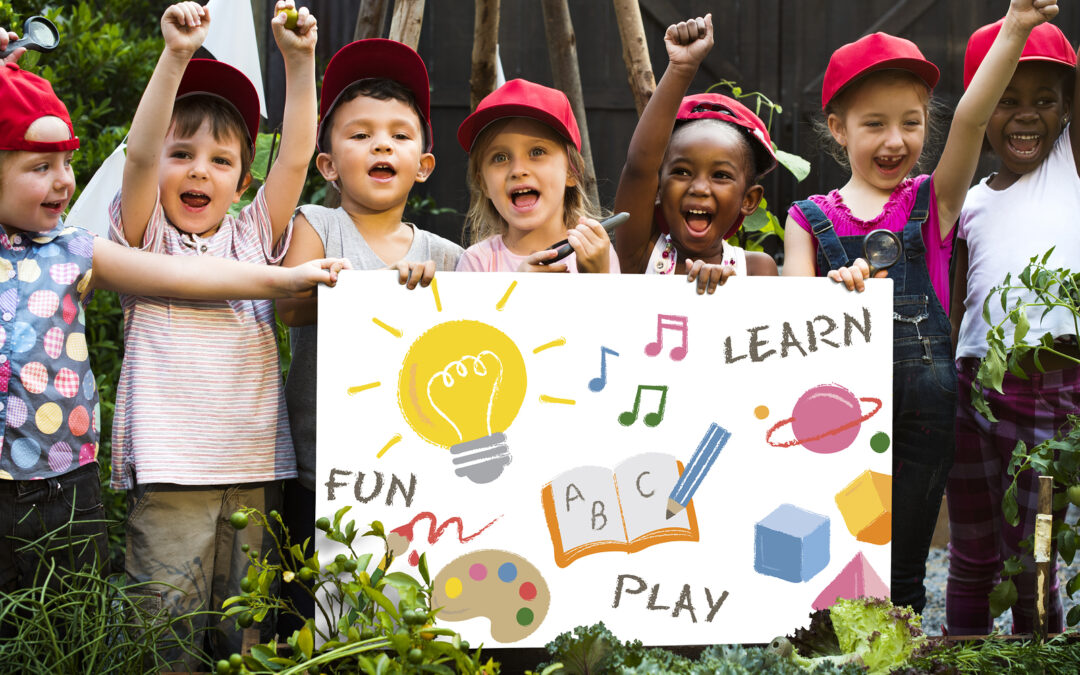A Spanish Immersion Kindergarten is an educational setting where young children are taught primarily in Spanish. This method immerses them in the language for most of their school day, promoting the natural and rapid acquisition of Spanish. It’s a popular choice for many parents due to the numerous cognitive and linguistic benefits it offers.
Why Choose Spanish Immersion?
- Cognitive Benefits: Studies have shown that bilingualism can enhance cognitive flexibility and problem-solving skills.
- Linguistic Advantages: Children in immersion programs pick up languages more quickly due to constant exposure.
In this article, we will explore:
- The pros of enrolling your child in a Spanish Immersion Kindergarten, focus on cognitive and linguistic benefits.
- The cons include potential challenges like delays in English reading skills and the mental demands of navigating two languages.
Understanding both sides will help you make an informed decision about whether this type of kindergarten is right for your child.
If you’re interested in alternative educational approaches that also promote cognitive development, you might want to explore Montessori education. Additionally, our website features other informative articles on early childhood education that you may find useful while considering different options for your child’s education.
Pros of Enrolling Your Child in a Spanish Immersion Kindergarten
1. Bilingualism Promotes Cognitive Flexibility and Problem-Solving Skills
Bilingual children often have better thinking abilities. They can easily switch between two languages from a young age, which improves their flexibility in thinking. This ability to adapt and switch gears helps them solve problems more effectively. For example, when faced with a challenge, their brain is already trained to think from different language perspectives, allowing them to come up with creative solutions.
2. Immersion in a Spanish-speaking environment Accelerates Language Learning
A key benefit of Spanish immersion programs is the fast learning of the language. When children are surrounded by people who speak Spanish and are encouraged to use the language in different situations, they learn it more quickly. This constant exposure speeds up their learning process, making them fluent speakers much faster than traditional language classes.
Children who are immersed in a Spanish-speaking setting become confident communicators in both English and Spanish. Their ability to navigate two linguistic systems enriches their cognitive abilities and broadens their worldview.
For more information on how immersion programs work, you might want to check out our Tuition page or see what activities are planned on our Calendar.
3. Cultural Respect and Broadened Worldview
Introducing children to different cultures from an early age can teach them to respect other cultures and expand their understanding of the world. A Spanish immersion kindergarten not only teaches the language but also introduces children to Hispanic cultures’ traditions, music, food, and values.
4. Enhances Brain Development
Being bilingual enhances brain development significantly. Studies have shown that bilingual children have denser gray matter in areas related to language processing and executive control compared to monolinguals. This dense neural network supports better memory, attention span, and multitasking abilities.
Enrolling your child in a Spanish immersion kindergarten, such as those offered by Amici Montessori, offers numerous cognitive benefits alongside rapid language acquisition and cultural enrichment. Additionally, it’s worth exploring other programs they offer like their infant program or the Mandarin schools in Ahwatukee, which could provide further language learning opportunities beyond the kindergarten years. They also have excellent K-6th after-school enrichment programs to support your child’s education journey even outside the regular school hours.
Cons of Enrolling Your Child in a Spanish Immersion Kindergarten
1. Temporary Delay in English Reading Skills
When children are first introduced to a Spanish Immersion Kindergarten, the primary focus is on developing Spanish literacy. This immersive approach can sometimes lead to a temporary delay in their English reading skills. Parents might notice that their child is not progressing at the same pace as peers who are in English-only programs.
However, research indicates that these children typically catch up with their English reading skills by the later elementary grades. The initial delay is often offset by the cognitive and linguistic benefits gained from being bilingual. For instance, once children become proficient in Spanish, they tend to transfer those reading skills to English more easily.
2. Mental Demands on Young Children
Being immersed in a new language environment can be mentally taxing for young children. They are not only learning academic content but also navigating social interactions in a language that may be unfamiliar initially. This dual challenge can sometimes result in:
- Fatigue: Constantly processing information in two languages can be exhausting.
- Moodiness: Children may become frustrated or moody as they adapt to the new linguistic landscape.
- Resistance: Some children may resist engaging with the new language, preferring the comfort of their native tongue.
Parents concerned about these issues should consider programs where teachers are skilled at balancing immersion with supportive strategies that ease this transition, such as those offered by Amici Montessori which specializes in early childhood development and enrichment programs.
Other Factors to Consider
- Qualified Teachers: The effectiveness of a Spanish Immersion Kindergarten heavily depends on having qualified teachers skilled in both early childhood education and language immersion methodologies.
- Cultural Exposure: Children will be exposed to different cultural norms and practices, enriching their worldview but potentially presenting challenges as they adjust.
- Parent-Teacher Communication: Non-Spanish-speaking parents might face communication barriers with teachers who primarily use the target language. Schools need to ensure effective parent-teacher communication strategies are in place to address these concerns.
3. Immersion Programs Can Be Mentally Demanding for Young Children
Immersion programs can be mentally demanding for young children, leading to fatigue or moodiness as they navigate between two linguistic and cultural systems. This mental load can sometimes feel overwhelming, especially for very young learners.
Challenges They May Face:
- Resistance to New Language: Some children may initially find it challenging to adapt to a new language environment, which can lead to resistance or reluctance to participate fully in class activities.
- Struggles with Advanced Fluency: Achieving advanced fluency in both languages may require additional effort and practice. Some children may struggle to keep up with the language expectations.
- Fatigue and Moodiness: Constantly switching between two languages and cultures can be tiring. Children might experience fatigue or moodiness due to the mental demands of immersion.
Potential Impact on English Proficiency:
While children typically catch up and become proficient readers in both languages, there might be a temporary delay in their English reading skills as the focus is initially on acquiring Spanish literacy. This period of adjustment may vary from child to child.
Understanding these potential hurdles can help parents prepare for and support their children through any initial difficulties they may face.
Other Factors to Consider When Choosing a Spanish Immersion Kindergarten
1. The Importance of Qualified Teachers with Expertise in Both Early Childhood Education and Language Immersion Methodologies
A significant factor in the success of a Spanish Immersion Kindergarten is the educator’s background. Teachers must possess not only proficiency in Spanish but also a deep understanding of early childhood education principles. This combination ensures that children receive age-appropriate instruction while effectively learning a second language.
Qualified teachers with expertise in language immersion methodologies can seamlessly integrate Spanish into various activities, making the learning process natural and engaging for young learners. For example:
- Interactive Storytelling: Using stories in Spanish to teach new vocabulary and cultural nuances.
- Play-Based Learning: Incorporating Spanish into play activities helps to reinforce language skills while keeping children engaged.
- Cultural Activities: Celebrating traditional Spanish holidays or cooking Spanish cuisine can provide immersive, hands-on experiences.
Teachers trained in both Montessori and language immersion approaches, like those at Amici Trilingual Montessori, can offer a holistic educational experience that balances cognitive development with language acquisition.
2. Exposure to Different Cultural Norms and Practices
Immersion programs often expose children to various cultural norms and practices. This can be incredibly enriching, providing children with a broader worldview and fostering empathy and understanding from an early age. Some ways this cultural exposure manifests include:
- Festivals and Traditions: Participating in celebrations such as Día de los Muertos or La Feria de Abril.
- Music and Dance: Learning traditional songs and dances that provide context to the language.
- Cultural Stories and Legends: Introducing children to folklore that reflects the values and history of Spanish-speaking cultures.
However, this exposure can also present challenges. Children might initially struggle to adapt to different social expectations or unfamiliar customs. Support from educators who understand these cultural nuances is crucial in helping children navigate these differences comfortably.
3. Potential Communication Barriers Between Parents and Teachers
Parents who are not fluent in Spanish may face communication challenges when interacting with teachers who primarily use the target language in the classroom. This can impact their ability to stay informed about their child’s progress or participate fully in school activities.
To address these potential barriers:
- Bilingual Communication Tools: Schools can provide newsletters, emails, or parent-teacher conference updates in both English and Spanish.
- Parent Workshops: Offering sessions where parents learn basic Spanish phrases relevant to school settings.
- Translator Services: Having translators available during important meetings or events.
Effective communication between parents and educators ensures that everyone involved in the child’s education is on the same page, making it easier to support the child’s learning journey both at school and at home.
Here are some key issues that can come up:
- Educator Background: Teachers need to have special training in both teaching young kids and using immersion methods. But even if they have great qualifications, the language barrier might make it tough to have full conversations about a child’s growth.
- Cultural Differences: Different cultures have different ways of doing things. This can affect how people talk and understand each other. Parents might have trouble understanding why teachers do things a certain way or what they expect from students. This difference can lead to misunderstandings or fights that nobody meant to start.
- Parental Involvement: Parents being active in their child’s education is really important, no matter where they go to school. But when parents can’t talk well with teachers, they might feel left out or like they don’t know what’s going on with their child’s learning.
To make these problems better:
- Schools can try using more than one language when they talk with families. They could translate papers into different languages or have someone there who speaks both languages during meetings.
- Teachers could set up regular meetings with parents where they use both Spanish and English. This could help everyone understand each other better.
- Making sure parents know they can ask questions or share things through email, apps, or newsletters can also help them feel more included.
By working on these issues before they become big problems, schools can create a better place for all students and families.
Conclusion
Every child is unique. When considering whether to enroll your child in a Spanish Immersion Kindergarten, think about their individual needs, preferences, and learning style.
Spanish immersion for kids can pose some challenges. However, the long-term benefits often outweigh these potential drawbacks. Bilingualism can enhance cognitive flexibility, problem-solving skills, and cultural awareness.
Parents can play a vital role in reinforcing their child’s language skills:
- Create a Bilingual Environment: Incorporate both English and Spanish in daily activities.
- Engage in Fun Activities: Use games, songs, and storytelling to make learning enjoyable.
- Consistent Practice: Encourage the use of Spanish through conversations at home.
Spanish kindergarten programs like those at Amici Trilingual Montessori offer a structured environment that prepares children for future opportunities while nurturing their linguistic abilities.
By thoughtfully considering these factors and supporting your child’s journey, you can maximize the benefits of a Spanish immersion program.


